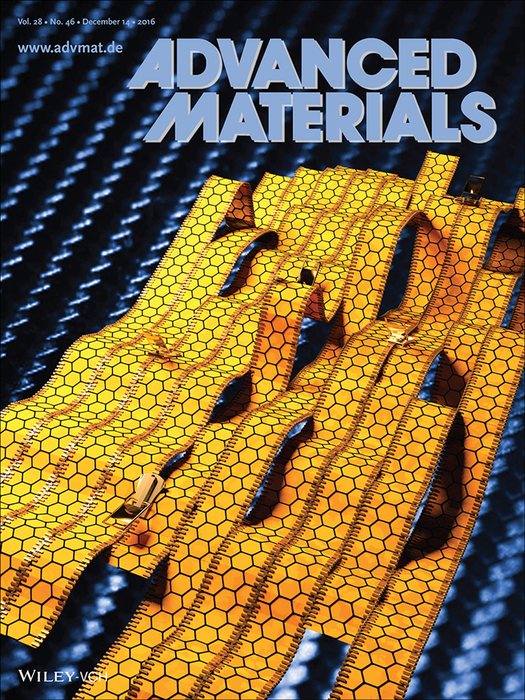当前位置:
X-MOL 学术
›
Adv. Mater.
›
论文详情
Our official English website, www.x-mol.net, welcomes your
feedback! (Note: you will need to create a separate account there.)
Carbon Fibers: Carbonization with Misfusion: Fundamental Limits of Carbon‐Fiber Strength Revisited (Adv. Mater. 46/2016)
Advanced Materials ( IF 27.4 ) Pub Date : 2016-12-09 , DOI: 10.1002/adma.201670327 Nitant Gupta 1 , Vasilii I. Artyukhov 1 , Evgeni S. Penev 1 , Boris I. Yakobson 1
Advanced Materials ( IF 27.4 ) Pub Date : 2016-12-09 , DOI: 10.1002/adma.201670327 Nitant Gupta 1 , Vasilii I. Artyukhov 1 , Evgeni S. Penev 1 , Boris I. Yakobson 1
Affiliation

|
On page 10317, B. I. Yakobson and co‐workers discuss “D‐loops”, which are new types of defect that form during the carbonization stages of polyacrylonitrile precursors. If the process is viewed as zipping together several polymeric nanoribbons, then faulty zipping can result in the formation of D‐loops. These defects can account for the large discrepancy between the theoretical strength of graphene and the measured experimental strength of carbon fibers.

中文翻译:

碳纤维:渗碳碳化:再谈碳纤维强度的基本极限(Adv。Mater。46/2016)
BI Yakobson和同事在10317页上讨论了“ D环”,这是在聚丙烯腈前体碳化阶段形成的新型缺陷。如果将该过程视为将多个聚合物纳米带拉链在一起,则错误的拉链会导致D环的形成。这些缺陷可以解释石墨烯的理论强度与测得的碳纤维实验强度之间的巨大差异。

更新日期:2016-12-09

中文翻译:

碳纤维:渗碳碳化:再谈碳纤维强度的基本极限(Adv。Mater。46/2016)
BI Yakobson和同事在10317页上讨论了“ D环”,这是在聚丙烯腈前体碳化阶段形成的新型缺陷。如果将该过程视为将多个聚合物纳米带拉链在一起,则错误的拉链会导致D环的形成。这些缺陷可以解释石墨烯的理论强度与测得的碳纤维实验强度之间的巨大差异。































 京公网安备 11010802027423号
京公网安备 11010802027423号